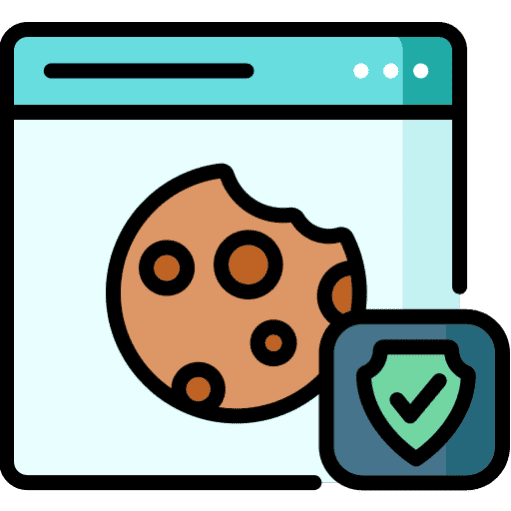Affiliate marketing is a popular online business model where individuals promote products or services on behalf of a company, known as the merchant or advertiser. As an affiliate marketer, you earn a commission for each sale or action generated through your unique referral link. It’s like being a virtual salesperson but without the hassle of dealing with inventory, customer support, or shipping.
The concept is simple. You find products or services that align with your interests and target audience and then promote them using various marketing channels.
When someone clicks on your affiliate link and makes a purchase, you earn a percentage of the sale as a commission. It’s a win-win situation: the merchant gains customers through your promotion efforts, and you earn passive income for driving those sales.
Overview of Pinterest as a powerful platform for affiliate marketing
Pinterest is more than just another social media platform; it’s a visual discovery engine that allows users to discover ideas, inspiration, and products through visual content known as pins. With over 400 million monthly active users worldwide, Pinterest offers immense potential for affiliate marketers to tap into targeted audiences. What makes Pinterest particularly appealing for affiliate marketing is its highly engaged user base actively seeking inspiration in various niches such as fashion, home decor, DIY projects, food recipes, fitness routines – the list goes on.
Users create boards to save and organize their favorite pins based on their interests. This creates an ideal environment for affiliates to showcase relevant products organically within these curated boards.
Moreover, Pinterest has built-in features like “Shop the Look” which enables product tagging directly in pins making it easier than ever for users to discover and purchase products they love. Furthermore, Pinterest prioritizes evergreen content meaning that unlike other social platforms where posts quickly fade away from visibility in feeds; well-optimized pins can continue driving traffic and conversions for months or even years.
Pinterest’s visually-driven nature engaged user base, and long-lasting content make it an attractive platform for affiliate marketers to leverage and generate consistent income. By strategically using affiliate links within carefully curated pins, you can provide value to your audience while earning passive income from the products or services you promote.
Getting Started with Affiliate Marketing on Pinterest
In this section, we will guide you through the initial steps of starting affiliate marketing on Pinterest. First, you’ll learn how to set up a Pinterest Business Account, which is essential for accessing specific features and analytics. Next, we will discuss the importance of understanding and adhering to Pinterest’s guidelines for affiliate marketing to ensure your activities align with the platform’s rules and regulations. Lastly, we will help you in choosing a suitable niche and finding the right products to promote, laying the groundwork for a successful affiliate marketing endeavor on Pinterest.
Creating a Pinterest Business Account
To embark on your affiliate marketing journey on Pinterest, the first step is to create a dedicated business account. This will provide you with access to essential features and analytics that can significantly enhance your affiliate marketing efforts. Setting up a business account is quite simple.
Just head over to the Pinterest website and click on “Create a Business Account.” Follow the prompts, fill in the required information, and voila! You’re ready to start leveraging Pinterest’s enormous potential.
Understanding Pinterest’s Guidelines for Affiliate Marketing
Before diving headfirst into affiliate marketing on Pinterest, it’s crucial to familiarize yourself with the platform’s guidelines regarding this practice. While Pinterest does allow affiliate links, they have specific rules in place to maintain a high-quality user experience. It’s essential to read and understand these guidelines thoroughly.
Pinterest encourages users to disclose their affiliation with brands or products they promote through pins containing affiliate links. As an affiliate marketer, transparency is key – make sure you clearly state that you may earn a commission from purchases made through your links.
Additionally, ensure that any content you create complies with copyright laws. Avoid directly copying images or texts from other sources without proper permissions or licenses.
Choosing the Right Niche and Products to Promote
When starting your journey as an affiliate marketer on Pinterest, selecting the right niche is paramount for success. Choose a niche that aligns with your interests and expertise but also has potential profitability. Conduct thorough research to identify niches where people actively seek information or products.
Once you’ve settled on a niche, it’s time to find suitable products or services for promotion as an affiliate marketer. Look for reputable companies or brands that offer attractive commission rates and have products relevant to your chosen niche.
Consider whether these products align with your target audience’s needs and preferences. Moreover, it’s essential to choose products with a proven track record of selling well online.
Look for positive customer reviews, high conversion rates, and good affiliate support. Selecting quality products will enhance your credibility and increase the likelihood of generating substantial affiliate income.
Before you can start your affiliate marketing journey on Pinterest, it’s crucial to create a Pinterest business account that grants you access to valuable features and analytics. Familiarize yourself with the platform’s guidelines surrounding affiliate marketing to ensure compliance and transparency in your promotions.
Carefully choose a niche that resonates with you and has potential profitability, while also selecting high-quality products or services for promotion. Armed with this knowledge, you’re ready to dive into the exciting world of affiliate marketing on Pinterest.
Optimizing Your Pinterest Profile for Affiliate Marketing Success
In this section, we will guide you through optimizing your Pinterest profile to enhance your affiliate marketing success. We will start by discussing how to craft a bio and profile description that effectively captures the attention of potential followers and customers. Next, we will delve into designing boards that are not only visually appealing but also align with your chosen niche, followed by strategic utilization of keywords to improve your profile’s visibility and searchability.
Furthermore, we will explore techniques for designing eye-catching pin graphics and writing compelling pin descriptions to engage users effectively. Lastly, we will discuss the importance of incorporating call-to-action elements in your pins to drive traffic and conversions. By following these optimization strategies, you will be better positioned to attract a targeted audience and achieve success in your affiliate marketing endeavors on Pinterest.
Crafting an attention-grabbing bio and profile description
When it comes to affiliate marketing on Pinterest, your bio and profile description act as your virtual business card. It’s the first impression you make on potential followers and customers.
To create an attention-grabbing bio, start by introducing yourself and clearly stating what you offer. For example, if you focus on fashion affiliate marketing, mention that you’re a fashion enthusiast or stylist.
Highlight your expertise and unique selling points to stand out from the crowd. Additionally, don’t forget to include a clear call-to-action (CTA) in your bio, such as “Click to discover my curated collection of stylish outfits!”
Designing visually appealing boards that align with your niche
Pinterest is all about visual appeal, so it’s crucial to design boards that captivate users’ attention while staying true to your niche. Begin by creating a cohesive aesthetic theme for each board using colors, fonts, and graphics that complement one another. For instance, if you’re promoting home decor products as an affiliate marketer, consider organizing boards based on room themes like “Cozy Living Room Ideas” or “Modern Kitchen Inspiration.” Make sure the cover image of each board reflects its content accurately and entices viewers to click through.
Utilizing keywords strategically in board titles and descriptions
Keywords play a vital role in helping users find relevant content on Pinterest. To optimize your profile for searchability, incorporate relevant keywords strategically throughout your board titles and descriptions. Research popular keywords related to your niche using tools like Pinterest Trends or Google Keyword Planner.
For instance, if you’re focusing on fitness-related affiliates like workout gear or healthy recipes, consider including keywords such as “fitness essentials,” “workout motivation,” or “healthy living tips.” By using these keywords naturally in your board titles and descriptions, you’ll increase the chances of appearing in search results and attracting a targeted audience. Remember that while optimizing with keywords is important, it’s equally crucial to write board titles and descriptions that are compelling and informative.
Use clear language and descriptive phrases to convey the purpose of each board. Additionally, consider adding relevant hashtags to increase discoverability within Pinterest’s search function.
For example, if you’re promoting sustainable fashion products, use hashtags like #ecofriendlyfashion or #slowfashionmovement. However, avoid stuffing your descriptions with excessive hashtags as it can make them look spammy.
Optimizing your Pinterest profile for affiliate marketing success involves crafting an attention-grabbing bio and profile description that showcases your expertise and includes a strong CTA. Design visually appealing boards that align with your niche by creating a cohesive aesthetic theme for each board and using captivating cover images.
Strategically utilize relevant keywords in your board titles and descriptions to enhance visibility within search results while ensuring that they remain compelling and informative. By implementing these optimization strategies effectively, you’ll be well on your way to attracting engaged followers who are more likely to convert into loyal customers through your affiliate links.
Designing Eye-Catching Pin Graphics
When it comes to catching the attention of Pinterest users, visuals are everything. To create eye-catching pin graphics, you don’t need to be a professional designer. Tools like Canva make it easy for anyone to design stunning pins that stand out in the crowded Pinterest feed.
Start by choosing a visually appealing template that matches your brand or niche. Canva offers countless templates specifically designed for Pinterest pins, so you’ll have plenty of options to choose from.
Once you’ve selected a template, customize it by adding your own images or choosing from Canva’s extensive library of stock photos and illustrations. Experiment with different color schemes and fonts to create a pin that aligns with your brand identity and grabs attention.
Remember, bold and vibrant colors tend to attract more clicks on Pinterest. Additionally, ensure that your pin graphics are visually cohesive across your boards, maintaining consistency in terms of color palette and overall style.
Writing Compelling Pin Descriptions
The power of an engaging pin graphic is undeniable, but don’t underestimate the importance of writing compelling pin descriptions as well. In fact, well-crafted descriptions can significantly increase the likelihood of driving traffic and conversions.
First and foremost, make sure your pin descriptions are concise yet informative. You only have a limited amount of space (up to 500 characters), so use it wisely!
Start with a captivating hook or introduction that piques curiosity or creates intrigue about what users will find when they click through. Next, sprinkle relevant keywords throughout your description naturally.
This will help Pinterest’s algorithm understand what your pin is about and improve its chances of appearing in relevant searches on the platform. Incorporate specific keywords related to your niche while ensuring the flow remains smooth and reader-friendly.
Including hashtags in your descriptions can also boost discoverability on Pinterest. Research popular hashtags related to your content and incorporate them strategically into your description for wider visibility among users searching for specific topics.
Incorporating Call-to-Action (CTA) Elements
To maximize the effectiveness of your pins, it’s crucial to incorporate call-to-action (CTA) elements that encourage users to take action. Whether it’s clicking through to your website, signing up for a newsletter, or making a purchase, a strong CTA can significantly increase conversion rates.
Consider adding text overlays on your pin graphics that explicitly state what action you want users to take. For example, if you’re promoting an e-book, include text such as “Download now!” or “Get your free copy!” This instantly communicates the value and encourages users to click through.
You can also incorporate CTA phrases in your pin descriptions. Use compelling language that emphasizes the benefits of taking the desired action.
For instance, phrases like “Discover the secrets,” “Unlock exclusive content,” or “Limited time offer” can create a sense of urgency and entice users to click. Don’t forget to include relevant links in both your pin graphics and descriptions.
These links should direct users to the specific landing page where they can fulfill the desired action. Whether it’s an affiliate link or a direct link to your own website, ensuring that it’s easily accessible will increase conversions and drive traffic effectively.
By designing visually stunning pins with tools like Canva, crafting compelling pin descriptions with keywords and hashtags, and incorporating strong call-to-action elements throughout your content, you’ll empower yourself with a powerful toolkit for driving traffic and boosting conversions on Pinterest. So go ahead and start creating captivating pins that leave Pinterest users craving more.
Building a Strong Affiliate Network on Pinterest
Building a robust network is more than just pinning; it’s about forging meaningful connections, collaborating with influencers, and actively participating in the community. We’ll guide you through the nuances of partnering with influencers in your niche, the benefits of group boards, and the importance of community engagement. Each of these elements plays a pivotal role in enhancing your affiliate marketing reach on Pinterest. Dive in to discover how to maximize your presence and influence on this platform.
Collaborating with like-minded influencers in your niche
When it comes to affiliate marketing on Pinterest, one of the most effective strategies is to join forces with influencers who share your niche. These are individuals or businesses that have already established a strong presence and following within your target market. By collaborating with them, you can tap into their audience and gain valuable exposure for your affiliate products.
To find like-minded influencers, start by searching for keywords related to your niche using Pinterest’s search bar. Pay close attention to accounts with a large number of followers and high engagement rates on their pins.
Engage with their content by liking, commenting, and sharing to establish a genuine connection. Once you’ve built rapport, reach out to them through direct messages or email, expressing your interest in collaboration.
Joining group boards to expand your reach
Group boards are one of Pinterest’s unique features that allow multiple users to contribute pins to a shared board. Joining relevant group boards can significantly expand your reach and expose your affiliate products to a larger audience. Look for group boards within your niche that have active members and good engagement levels.
To find group boards, you can utilize websites like PinGroupie or directly search within Pinterest using keywords such as “group boards” + “your niche.” Upon finding suitable options, review the board rules set by the owner before requesting an invitation. Some group boards require you to follow specific guidelines or contact the owner outside of Pinterest.
Once you’re accepted into a group board, make sure to consistently contribute high-quality content that aligns with the board’s theme. This will not only increase visibility but also enhance your credibility as an affiliate marketer within the community.
Participating in community engagement activities
Building relationships and engaging with other users is vital when it comes to affiliate marketing on Pinterest. Participating in community engagement activities helps you establish yourself as an active and valuable member of the Pinterest ecosystem, which can lead to increased visibility and trust among your target audience. Take the time to explore other users’ pins, leave thoughtful comments, and share relevant content.
By showing genuine interest in others’ work, you can foster connections and attract attention to your own pins and affiliate products. Additionally, consider hosting or participating in collaborative boards or challenges that encourage interaction among Pinterest users.
This could involve creating a group board where users contribute their favorite products or hosting a pinning challenge with a specific theme. These activities not only help grow your network but also create opportunities for cross-promotion.
Remember, building a strong affiliate network on Pinterest is all about establishing meaningful connections with influencers and engaging with the community consistently. By collaborating with like-minded individuals, joining group boards, and actively participating in community engagement activities, you can boost your reach and increase the effectiveness of your affiliate marketing efforts on this visually-driven platform.
Tracking Performance and Analyzing Data for Optimization
Understanding how to effectively use tracking tools, such as affiliate networks or Bitly, is fundamental in gauging the success of your pins and overall strategy.
We will discuss the significance of key metrics like Click-Through Rates (CTR) and conversions, and how they can provide insightful data to enhance your affiliate marketing efforts. These metrics are instrumental in understanding user engagement and the effectiveness of your pins in driving desired actions.
Setting up Tracking Links using Affiliate Networks or Tools like Bitly
When it comes to affiliate marketing on Pinterest, tracking your performance is crucial for optimizing your strategies and maximizing your results. One effective way to do this is by setting up tracking links using affiliate networks or tools like Bitly.
These tracking links allow you to monitor the traffic coming from Pinterest and determine which pins are driving the most conversions. Affiliate networks often provide their own tracking systems, allowing you to generate unique affiliate links for each product you promote.
By incorporating these links into your pins, you can easily track clicks and conversions in one centralized location. Alternatively, tools like Bitly offer link-shortening services with added tracking capabilities, enabling you to monitor click-through rates (CTR) and other metrics.
Monitoring Key Metrics such as Click-Through Rates (CTR) and Conversions
Once you have set up your tracking links, it’s essential to monitor key metrics such as click-through rates (CTR) and conversions. These metrics provide valuable insights into the effectiveness of your affiliate marketing efforts on Pinterest. CTR measures the percentage of users who clicked on your pin compared to the number of times it was viewed.
A high CTR indicates that your pin is engaging and compelling enough to attract clicks. By analyzing CTR data, you can identify which pins are performing well and replicate their success in future campaigns.
Conversions, on the other hand, represent the number of users who not only clicked on your pin but also completed a desired action such as making a purchase or signing up for a newsletter. Tracking conversions allows you to assess the profitability of each pin and understand which products resonate with your audience.
Adjusting Strategies Based on Data Insights to Maximize Results
Data insights obtained from monitoring key metrics are invaluable in optimizing your affiliate marketing strategies on Pinterest. By analyzing the data, you can identify patterns, trends, and opportunities for improvement.
For instance, if you notice that certain pins have a high CTR but low conversion rates, it might indicate that the landing page or product being promoted needs adjustment. Perhaps the product description isn’t persuasive enough or the pricing might need to be revisited.
By making these necessary adjustments based on data insights, you can increase your chances of converting clicks into sales. Additionally, data insights can help you refine your content strategy.
You may discover that pins with specific visuals or formats perform better than others. By leveraging this knowledge and creating similar content in the future, you can enhance engagement and drive more traffic to your affiliate links.
Tracking performance and analyzing data are essential steps in optimizing your affiliate marketing efforts on Pinterest. Setting up tracking links using affiliate networks or tools like Bitly allows you to monitor traffic from Pinterest accurately.
Monitoring key metrics such as click-through rates (CTR) and conversions provides valuable insights into pin performance. By adjusting strategies based on these data insights, you can maximize results and increase your chances of success as an affiliate marketer on Pinterest.
Tips, Tricks, and Best Practices for Affiliate Marketing on Pinterest
n this section, we delve into the nuances of affiliate marketing on Pinterest, offering you a compilation of actionable tips, tricks, and best practices to elevate your game.
Optimizing Pin Descriptions for SEO Benefits
When it comes to making your pins discoverable, optimizing pin descriptions for search engine optimization (SEO) is crucial. Start by using relevant keywords in your pin descriptions to increase their visibility in search results.
Think about the words or phrases that users might use when searching for products related to your affiliate offerings. However, avoid keyword stuffing and ensure that your descriptions sound natural and compelling.
In addition to keywords, consider incorporating hashtags that are popular within your niche. Hashtags help categorize and organize content on Pinterest, making it easier for users to find what they’re looking for.
Research popular hashtags related to your topic and include a few in each pin description. Don’t forget to include a strong call-to-action (CTA) in your pin descriptions.
Encourage users to click through to learn more or make a purchase. A well-crafted CTA can significantly impact engagement and conversion rates.
Testing Different Pin Designs, Formats, and Layouts
Variety is the spice of life – and also of successful affiliate marketing on Pinterest! Experiment with different pin designs, formats, and layouts to see what resonates best with your audience. Try different color schemes, fonts, image sizes, and even the placement of text overlays.
A/B testing can be particularly useful here – create multiple versions of the same pin but with slight variations in design elements or copywriting. Then track their performance using analytics tools provided by Pinterest or third-party applications like Tailwind or Google Analytics.
By constantly testing and refining your pin designs, you can uncover the most effective visuals that catch attention, generate clicks, and ultimately lead to conversions. Remember, what works for one niche or audience may not work for another, so adapt your approach accordingly.
Staying Updated with the Latest Trends in Visual Content Creation
Pinterest is a platform where visuals take center stage. It’s crucial to stay in touch with the latest trends in visual content creation to keep your affiliate pins fresh and engaging. Follow influential Pinterest accounts within your niche and observe their design choices.
Pay attention to emerging design styles, color schemes, or typography trends that are popular among users. Incorporating these trends into your pin designs can help maintain relevancy and capture the attention of your target audience.
Additionally, keep an eye on Pinterest’s official blog and other reputable sources for updates on new features or changes that could impact how you effectively promote affiliate products on the platform. Staying up-to-date ensures that you’re always leveraging Pinterest’s full potential as a marketing tool.
Final Thoughts
Affiliate marketing on Pinterest presents a fantastic opportunity for individuals looking to monetize their online presence while sharing valuable products with their followers. By optimizing pin descriptions for SEO benefits, testing different pin designs and layouts, and staying updated with visual content creation trends, you can amplify your success as an affiliate marketer on this vibrant platform.
Remember to constantly analyze performance metrics such as click-through rates (CTR) and conversions to gauge the effectiveness of your strategies. Stay flexible by adapting to changes in user preferences or algorithm updates while keeping an optimistic outlook on reaching new heights in affiliate marketing success.

















